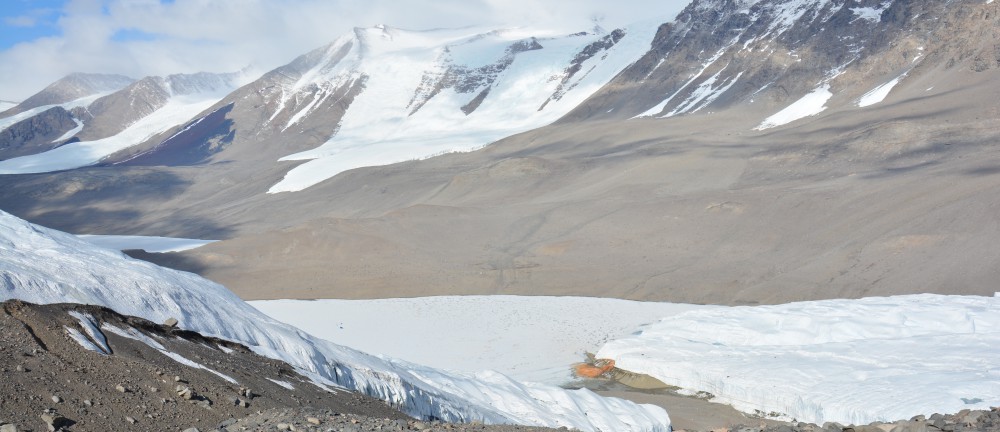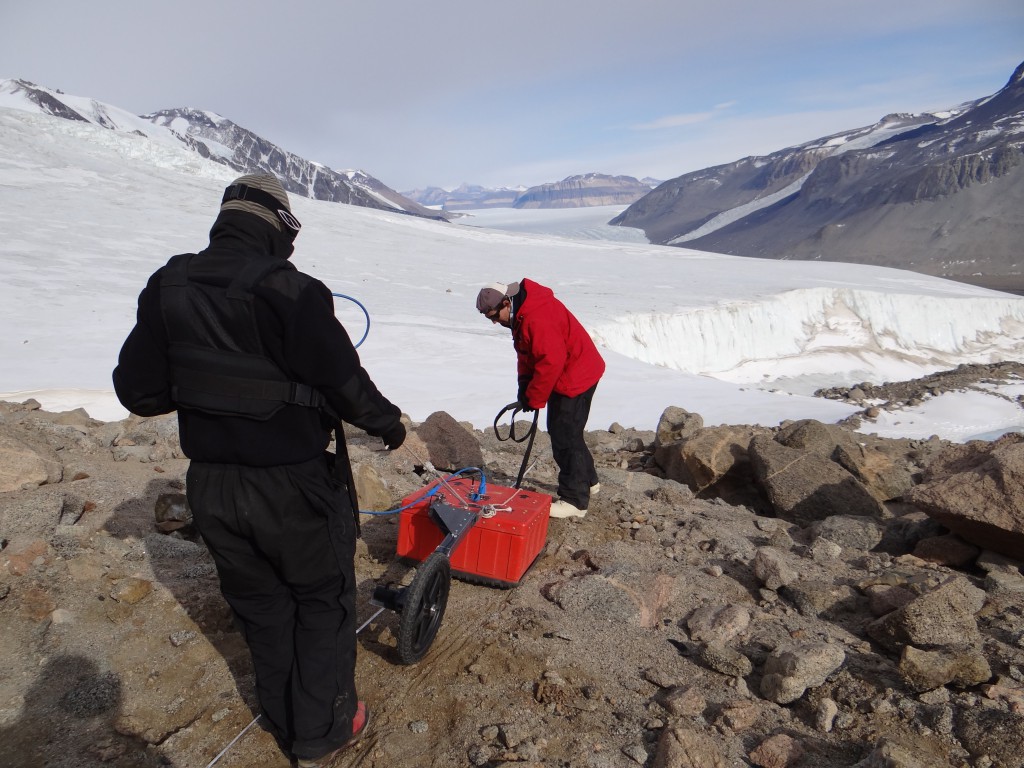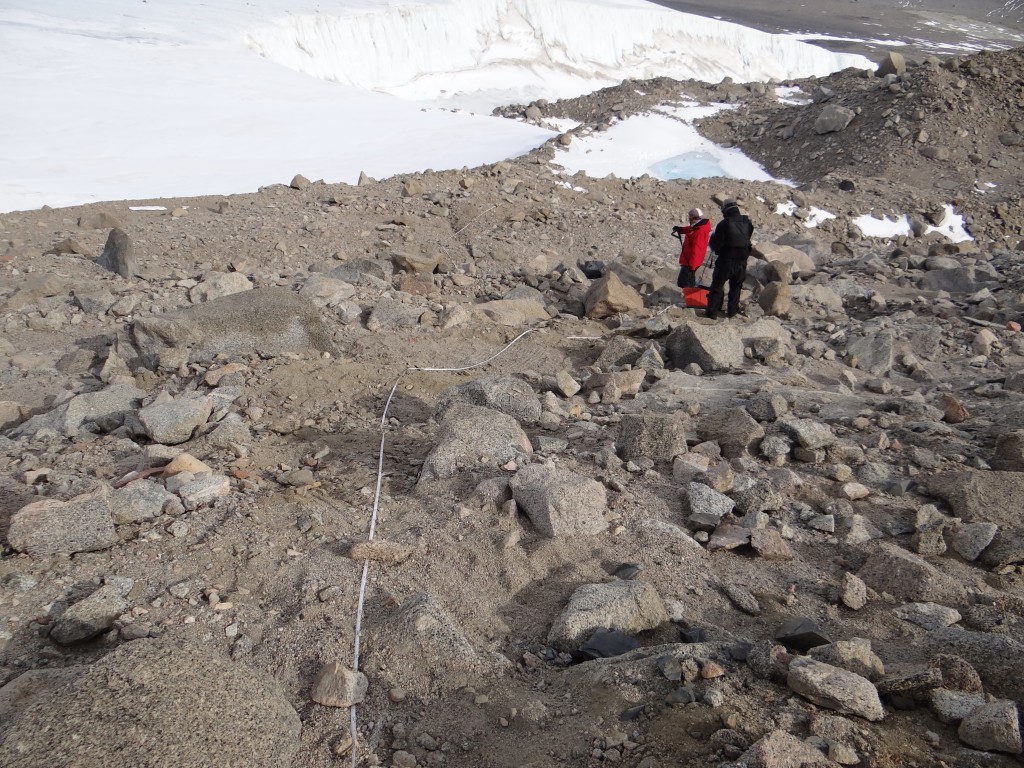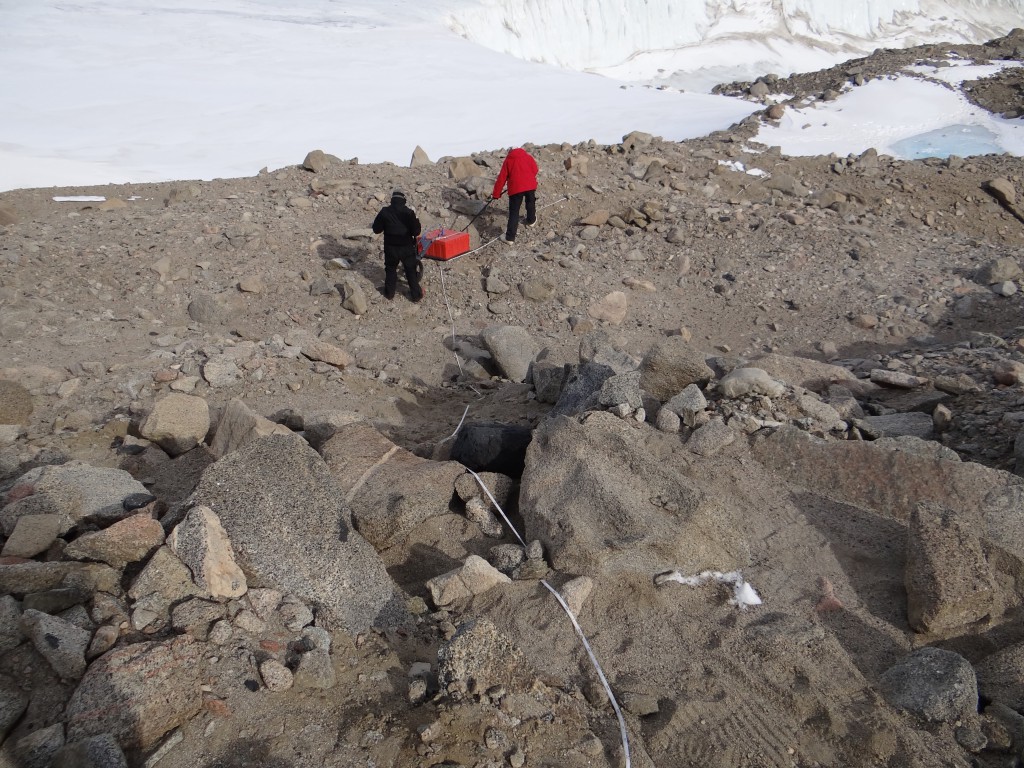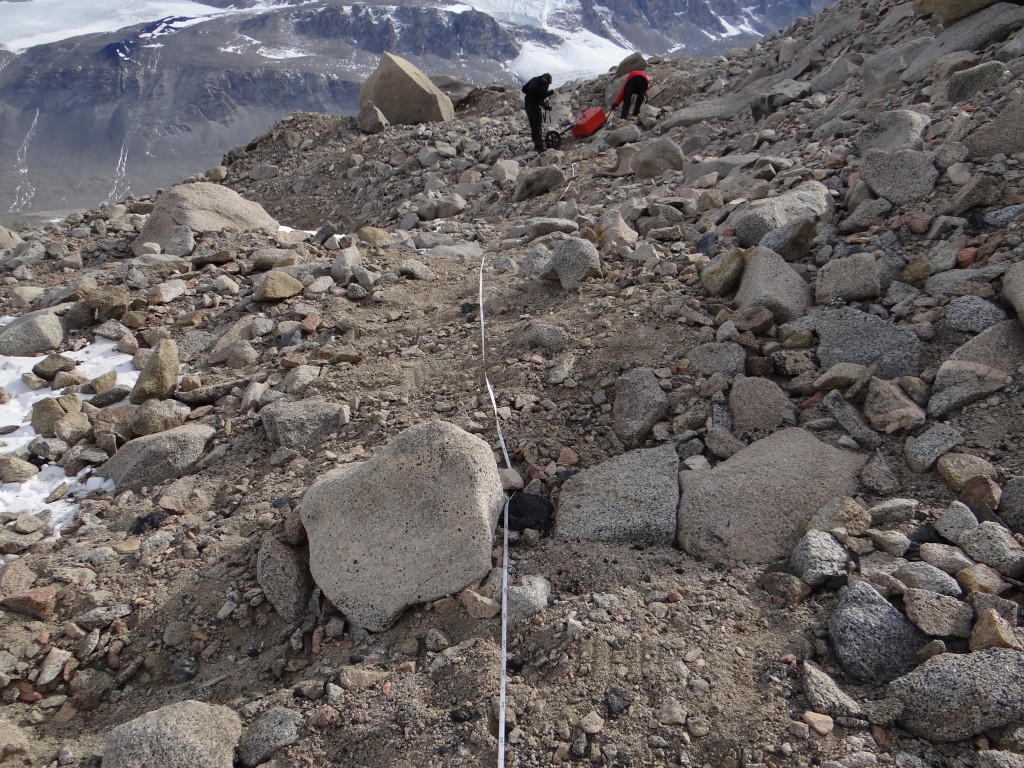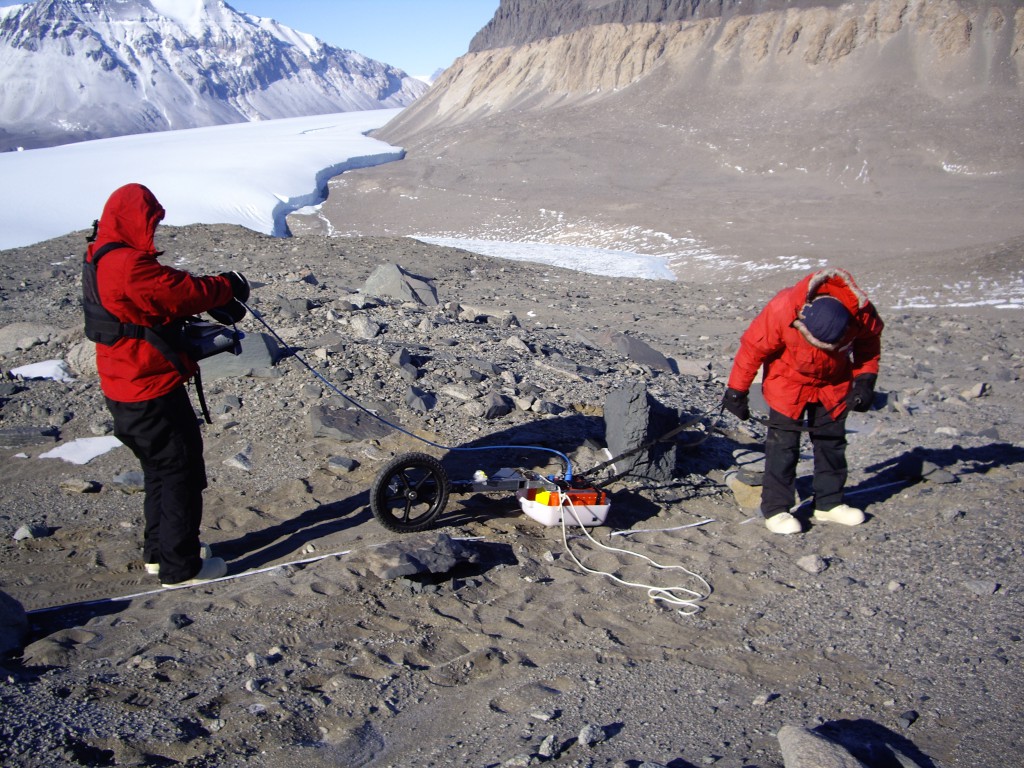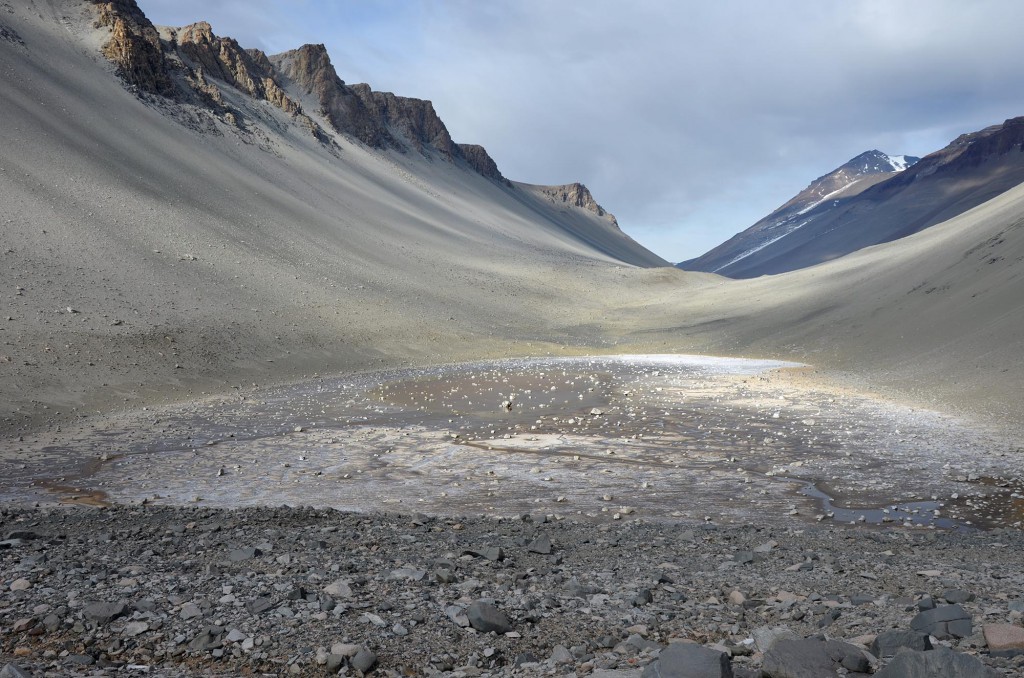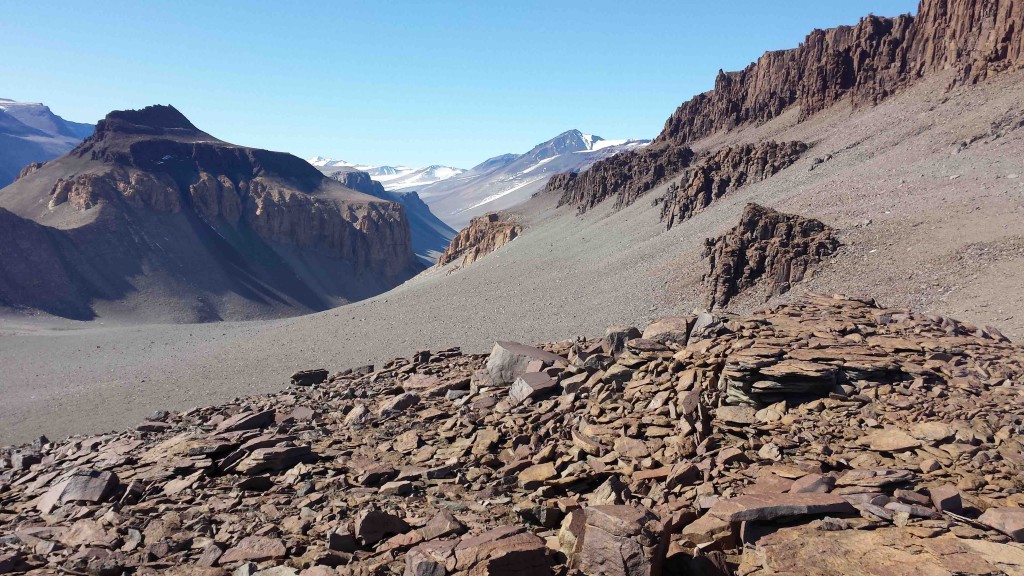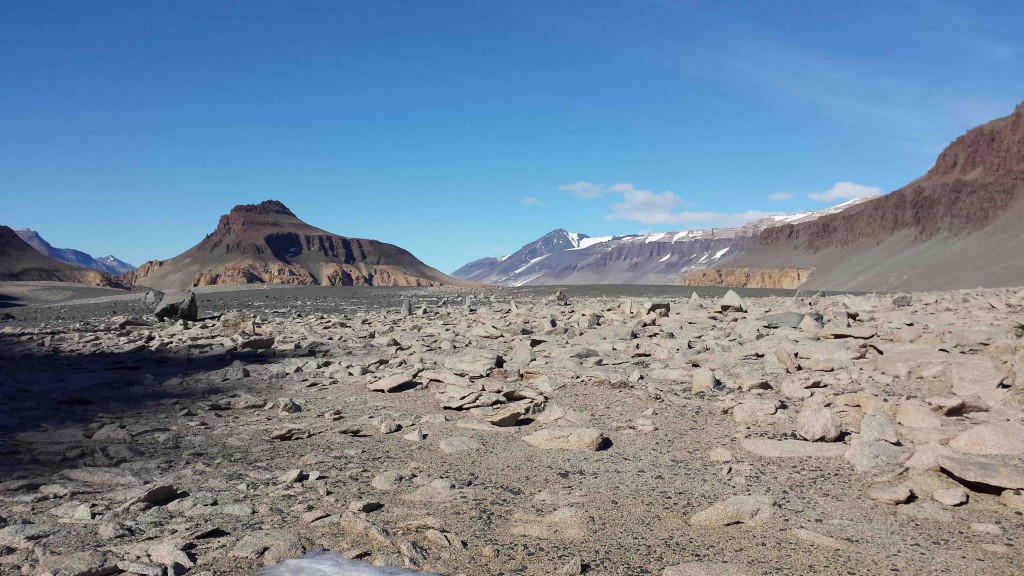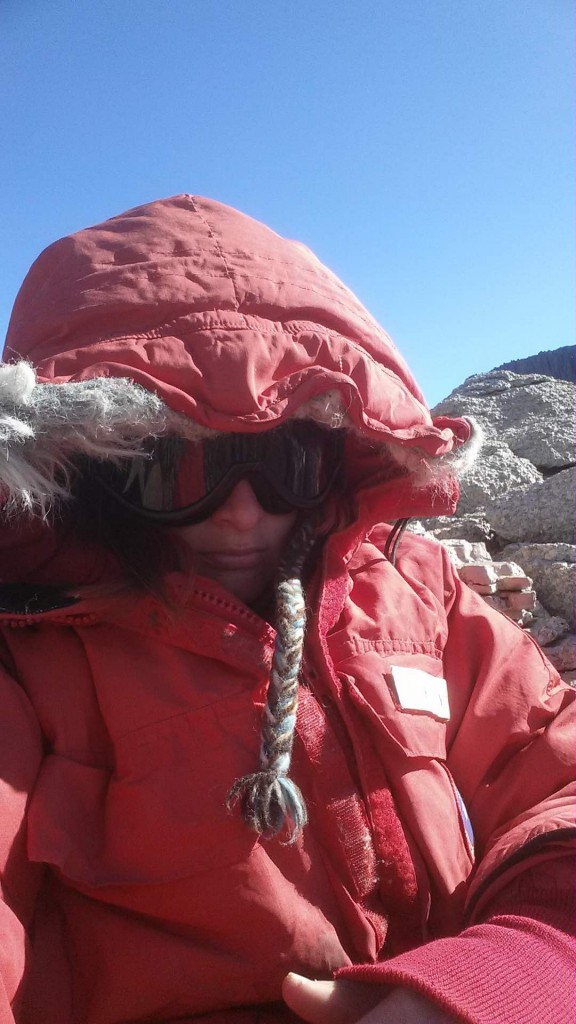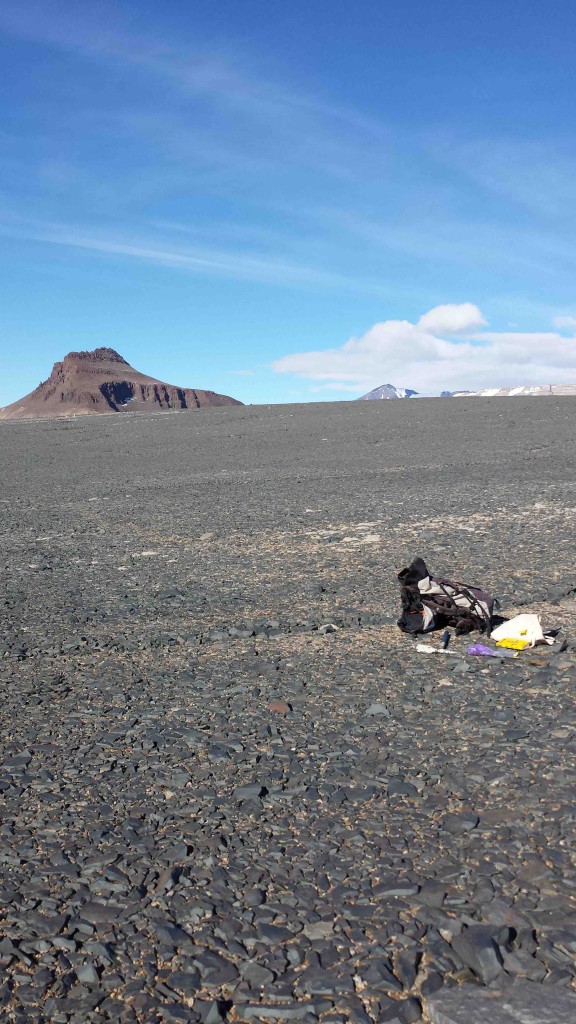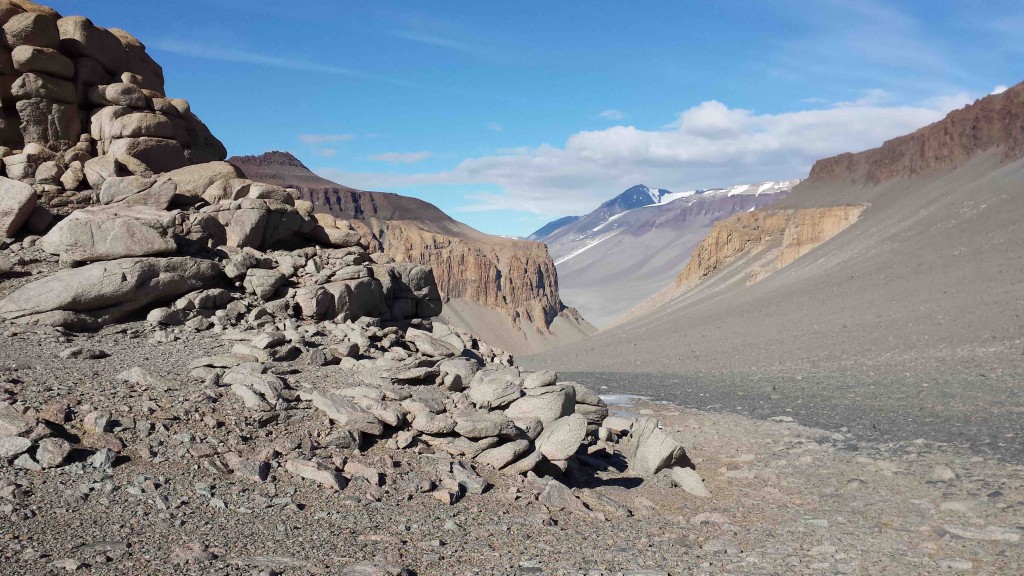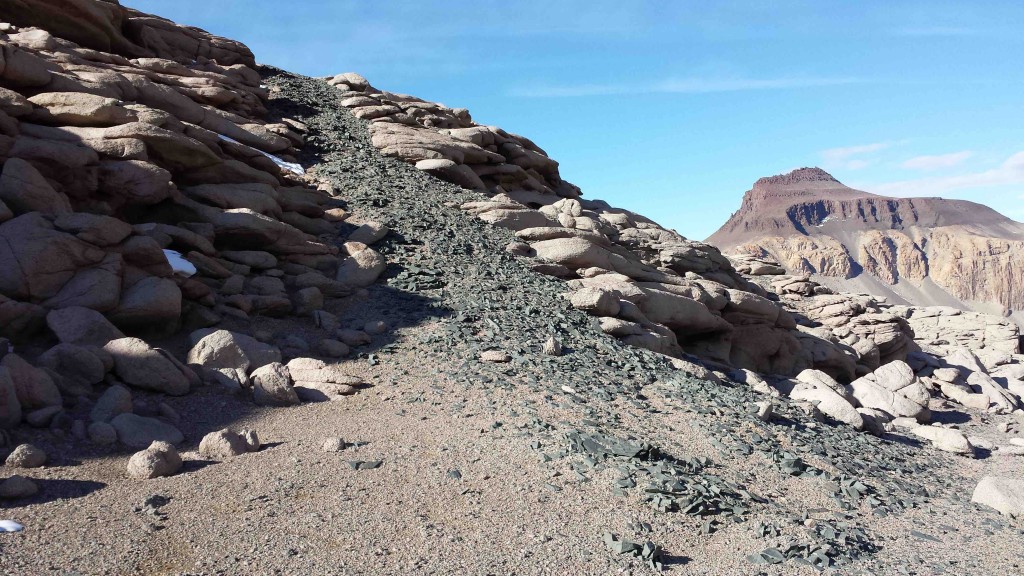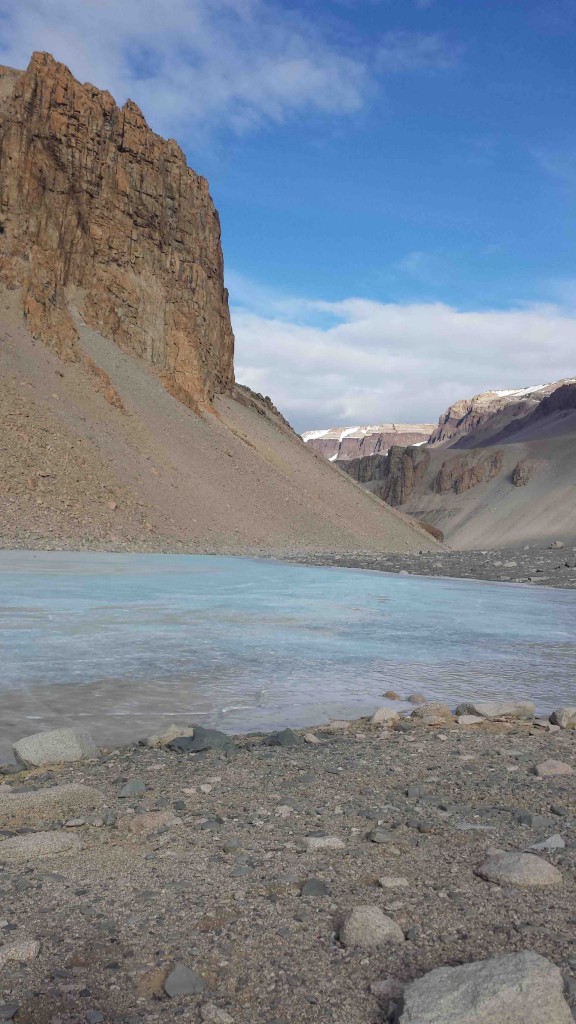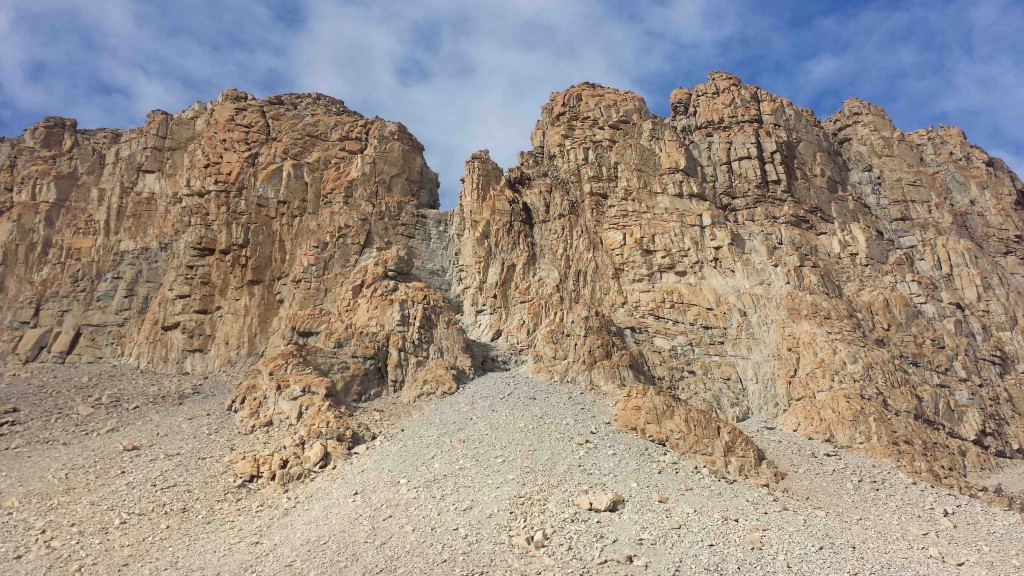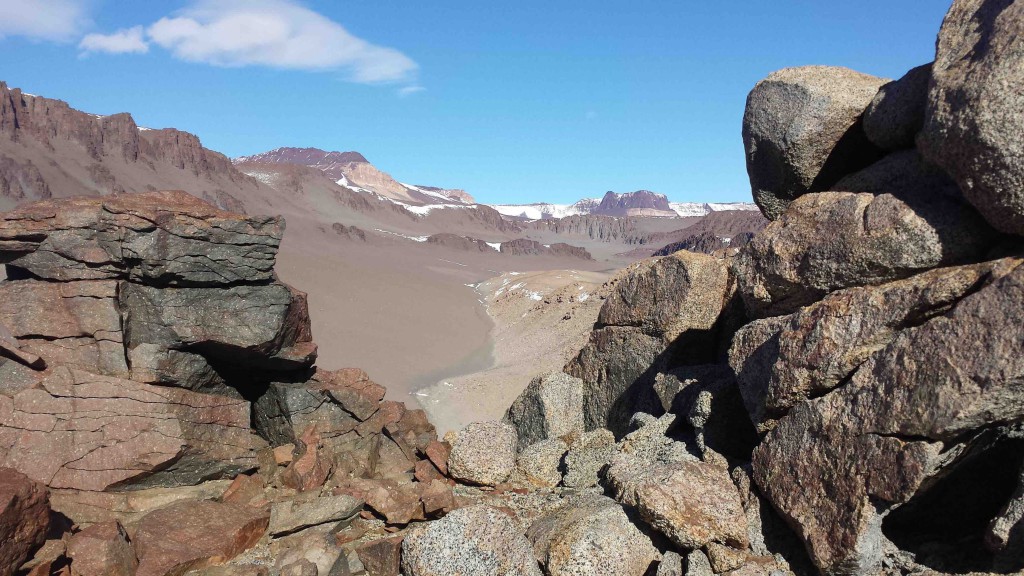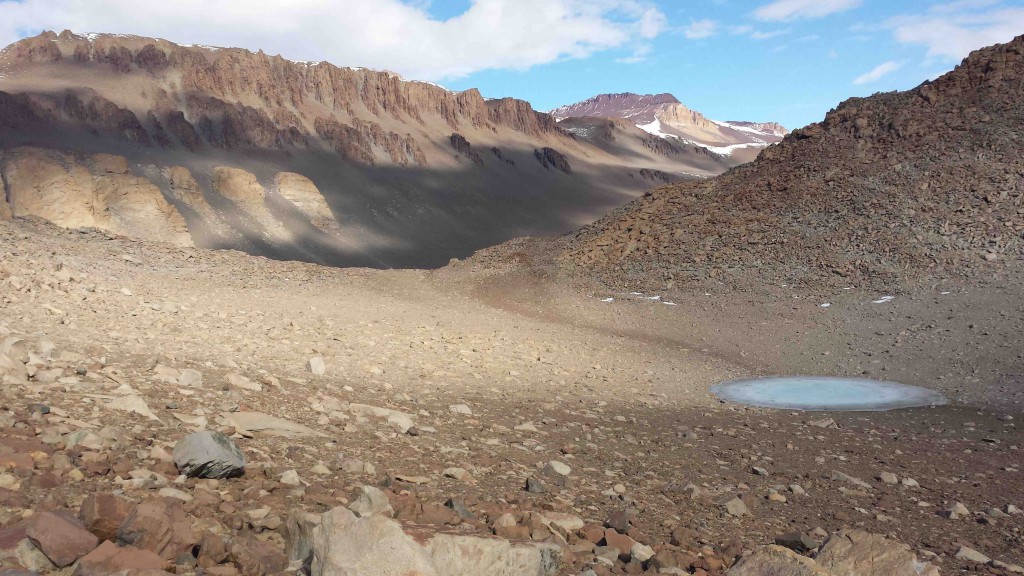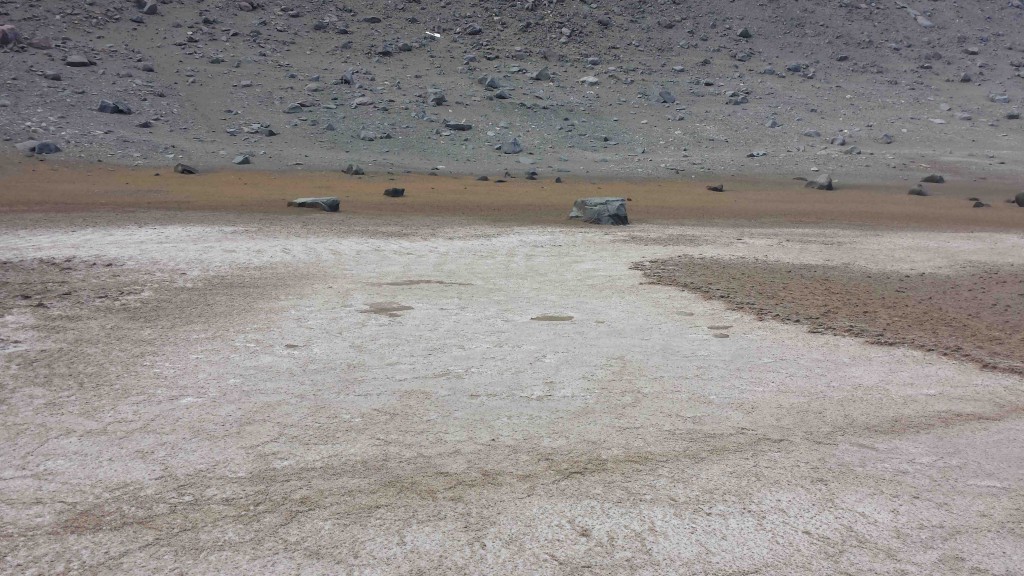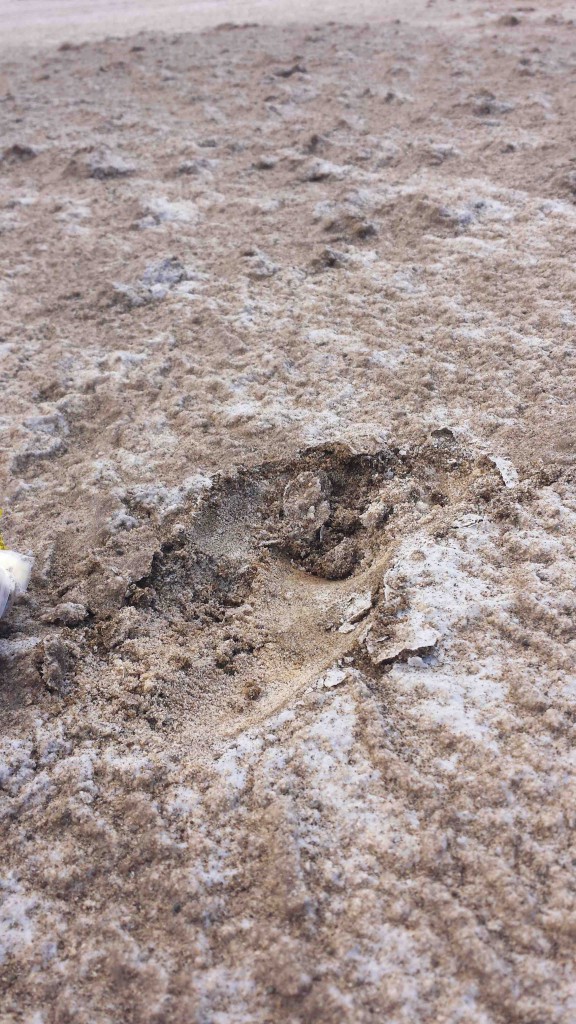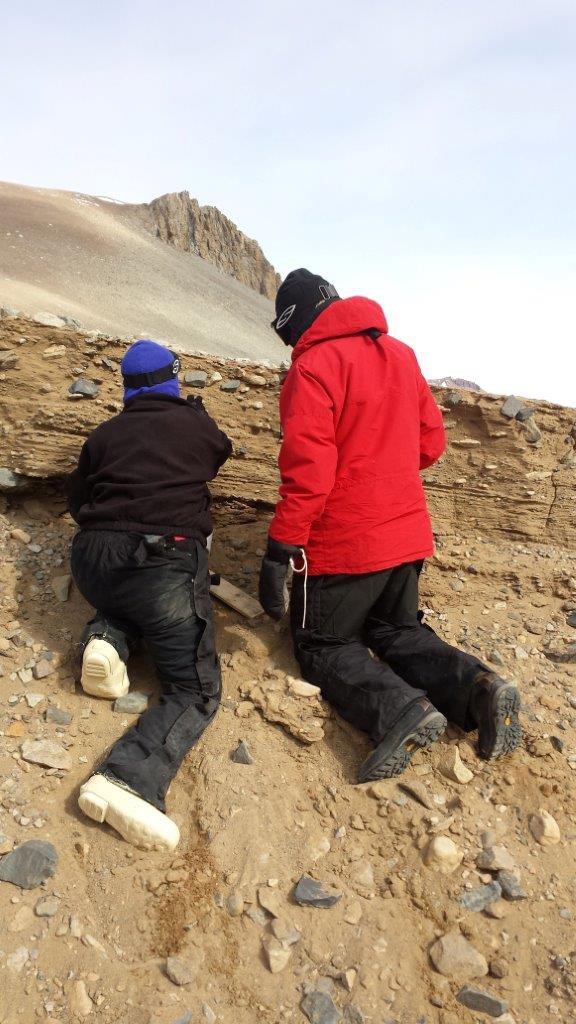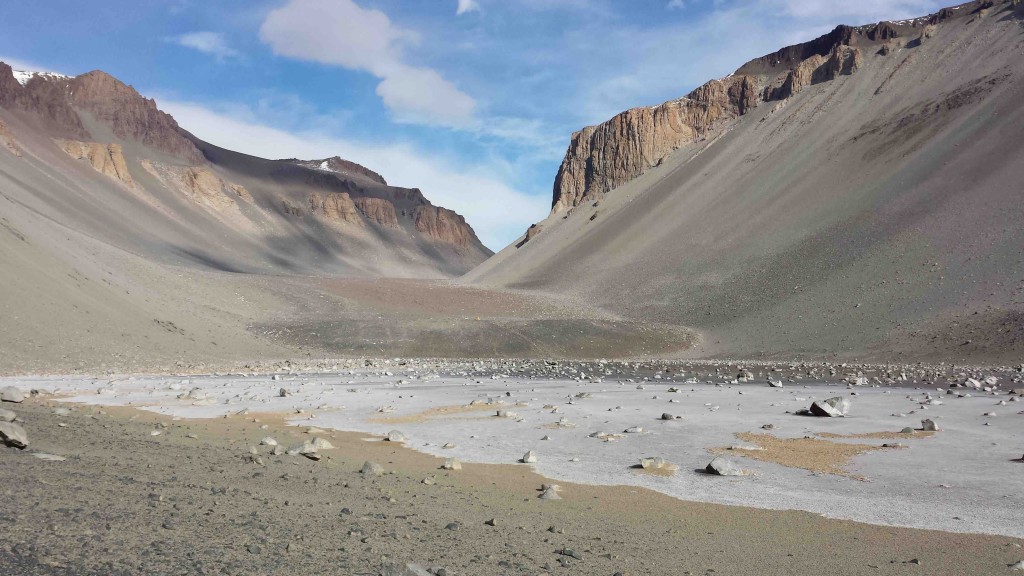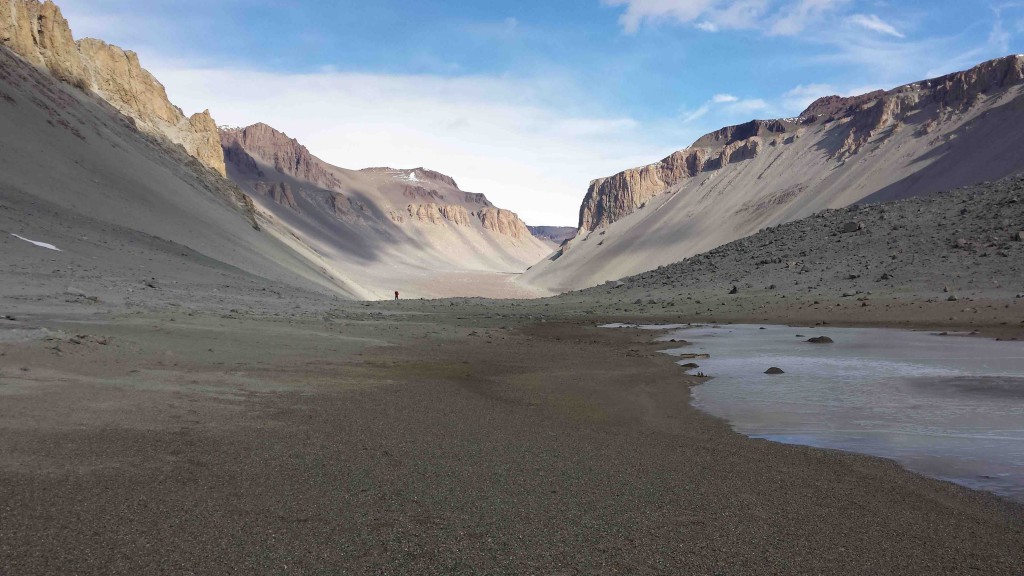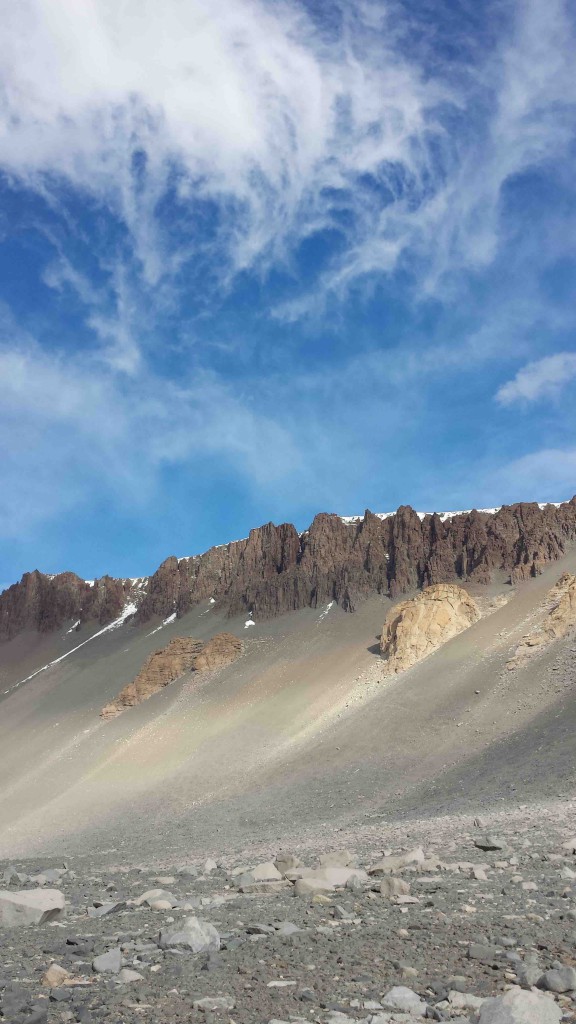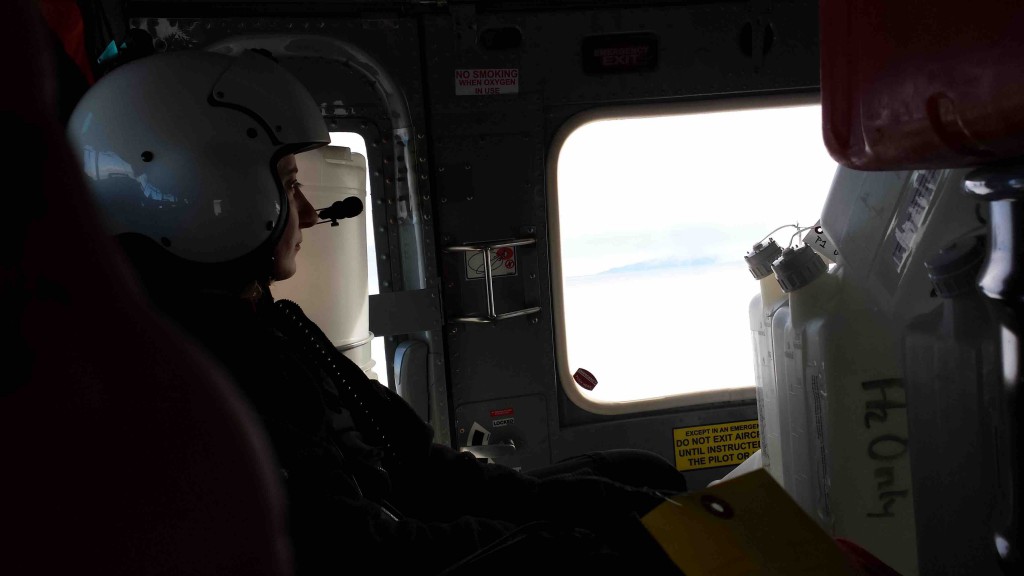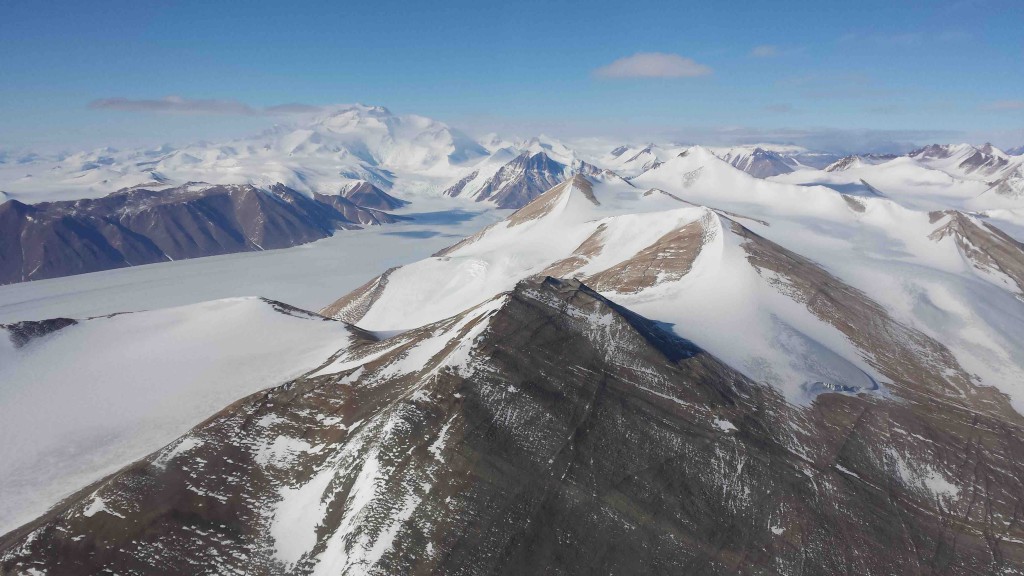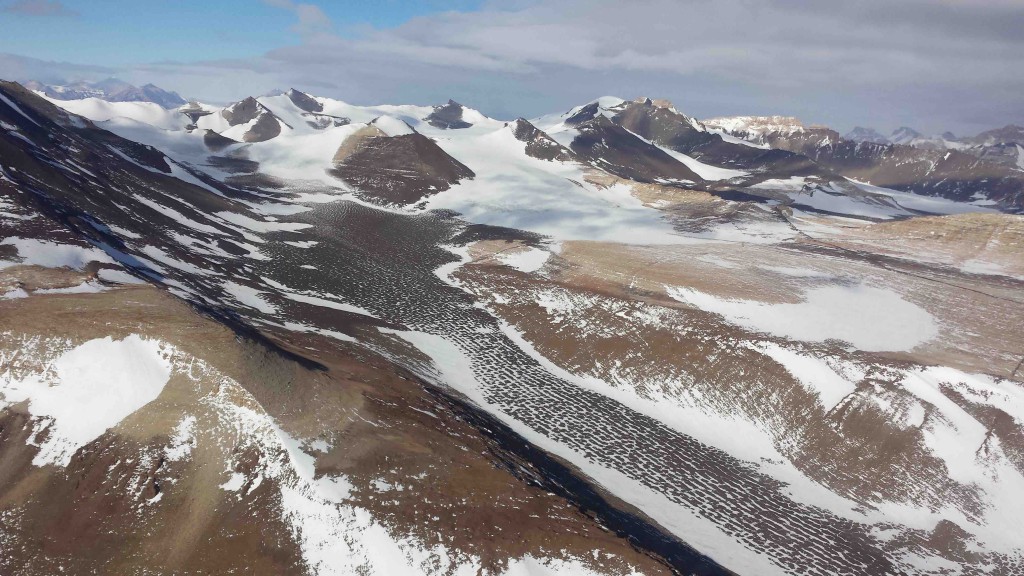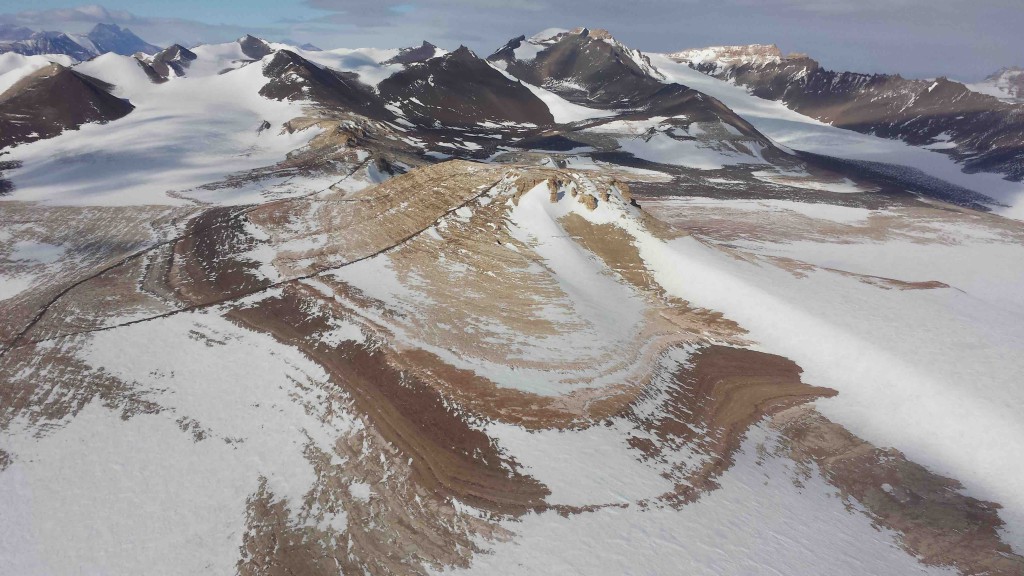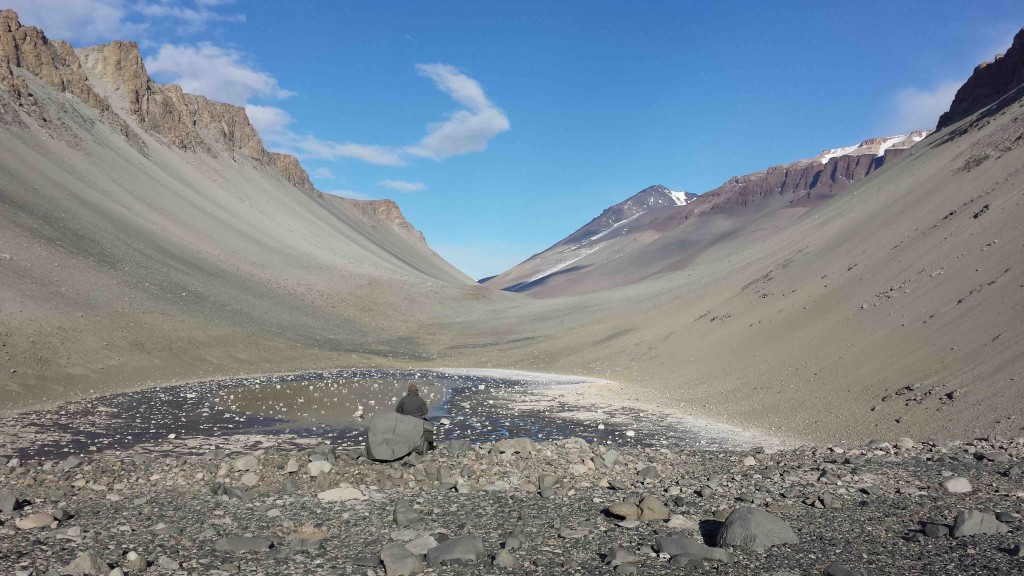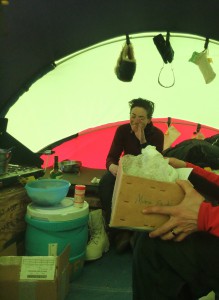Guest blogger: Rachel Valletta, University of Pennsylvania
As you’re reading this, invisible cosmic rays are relentlessly bombarding the earth’s surface, smashing into and tearing apart molecules, and creating new radioactive elements.
So, that’s weird.
This bizarre-o process is how cosmogenic radionuclides are born in rocks very near to the earth’s surface (cosmo-, from in the cosmos, -genic, originating process). The longer a rock is exposed to cosmic radiation at the earth’s surface, the greater the concentration of radionuclide that is accumulated. Short exposure time=lower concentrations. Long exposure time=higher concentrations.
If this poor, unassuming rock is buried, however, cosmogenic radionuclide accumulation will halt. Glaciers are particularly good at blocking cosmic radiation from reaching the bedrock over which they slide and, here in the McMurdo Dry Valleys, we have sampled that exact bedrock that was once covered by overriding glacial ice. We will take these samples back to the U.S. with us and measure itty bitty concentrations of cosmogenic radionuclides that are contained within.
Sidebar: What’s an “itty bitty” concentration? Glad you asked. We are typically measuring element concentrations on the order of millions of atoms. That may sound like a lot, but don’t be fooled! Take a commonly measured cosmogenic radionuclide (and my personal favorite), beryllium (Be). 1 gram of Be contains more than 1 sextillion atoms. That’s more than 1 billion trillion atoms…in just 1 gram of the stuff! That means that the concentrations we measure represent about 0.00000000000000001% of 1 gram of Be!
It’s ok – it blows my mind, too.
The exposure history of these rocks help us better understand how glaciers have grown and shrunk in the past. In turn, these changes in glacial behavior help us interpret changes in the climate and what the Dry Valleys region may have looked like long before we arrived here.
A common sampling technique is to target large boulders that have been pushed to the glacier’s furthest extent. Unfortunately, many small cirque glaciers in the Dry Valleys do not move such massive rocks. Here, in Dipboye Cirque, upper Wright Valley, we’re testing a new technique on meter-scale boulders.
We use a rock drill to set wedges and shims into the rock surface then we hammer away with a sledge until the rock surface pops loose for us to collect. The technique is adapted from stone masonry – and has earned me the unfortunate nickname “The Destroyer”.
Now that we’ve returned to McMurdo, these samples will get packed up and sent on a long journey home via ocean cruiser. After much time in prep at the University of Pennsylvania Cosmogenic Isotope Laboratory, they’ll be sent off for atomic mass spectrometry analysis. All in all, sample collection to data point generation takes ~1 year. In the meantime, I’ll be waiting patiently J
This is The Destroyer, clear.
